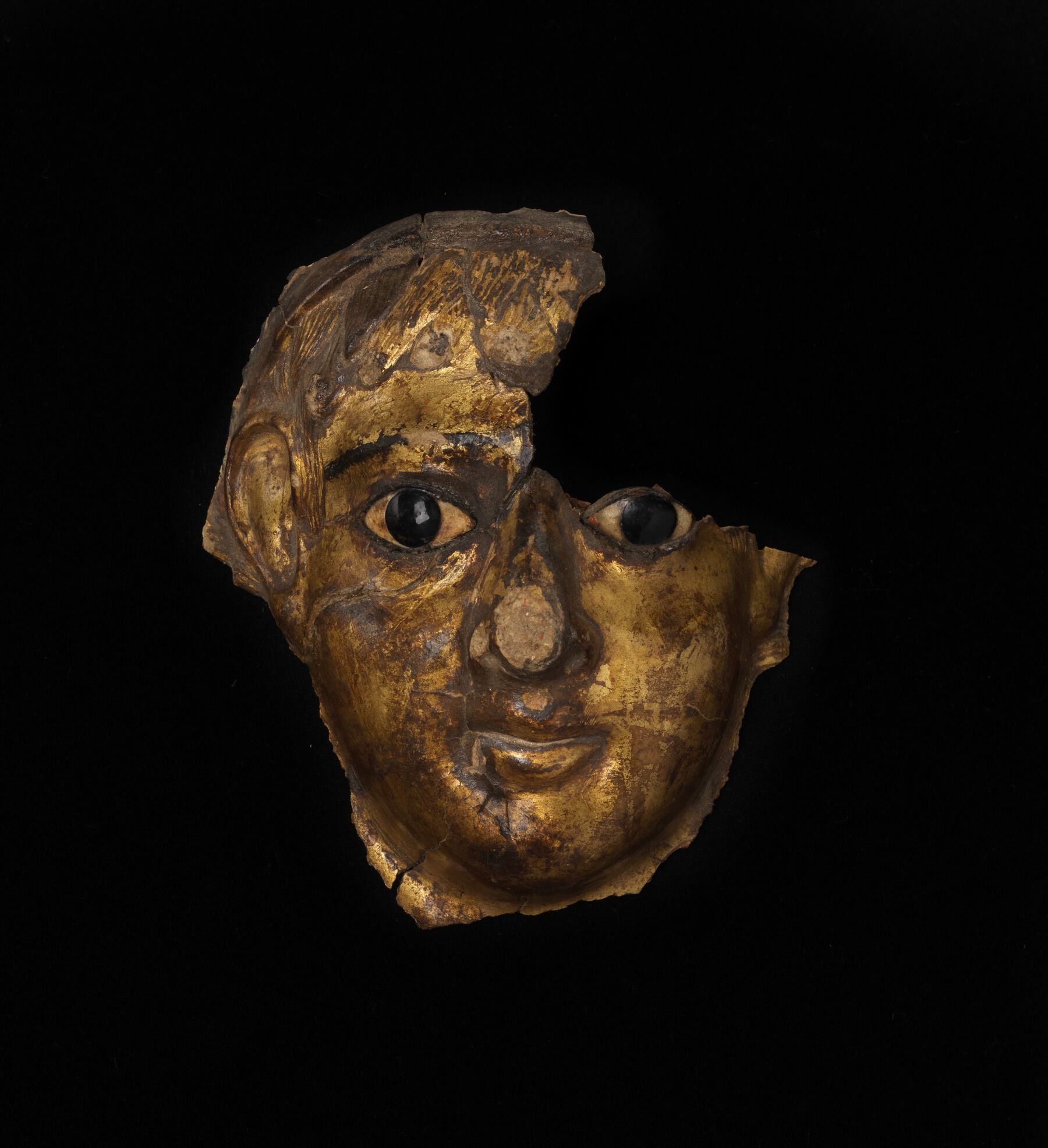Egypt under Roman rule combined the tradition of Egyptian mummification with the Roman funerary custom of carrying a bust of the deceased in the procession to the tomb.1 This gilded face may have once been part of a mummy case. The cartonnage face mimics a young boy with chubby cheeks and a small mouth. The boy’s wide-open eyes are made of black and white glass and fringed with copper eyelashes. Black pigment delineates his brows and rims the eyes. The gilding represents wealth, and the owner as a divine being with golden skin.
MH
-
Spurr, Stephen, Nicholas Reeves, and Stephen Quirke. 1999. Egyptian Art at Eton College, selections from the Myers Museum at Eton College. Eaton, Windsor, and New York: Eton College and The Metropolitan Museum of Art.. ↩︎
Bibliography
- Spurr, Reeves, and Quirke 1999
- Spurr, Stephen, Nicholas Reeves, and Stephen Quirke. 1999. Egyptian Art at Eton College, selections from the Myers Museum at Eton College. Eaton, Windsor, and New York: Eton College and The Metropolitan Museum of Art.
